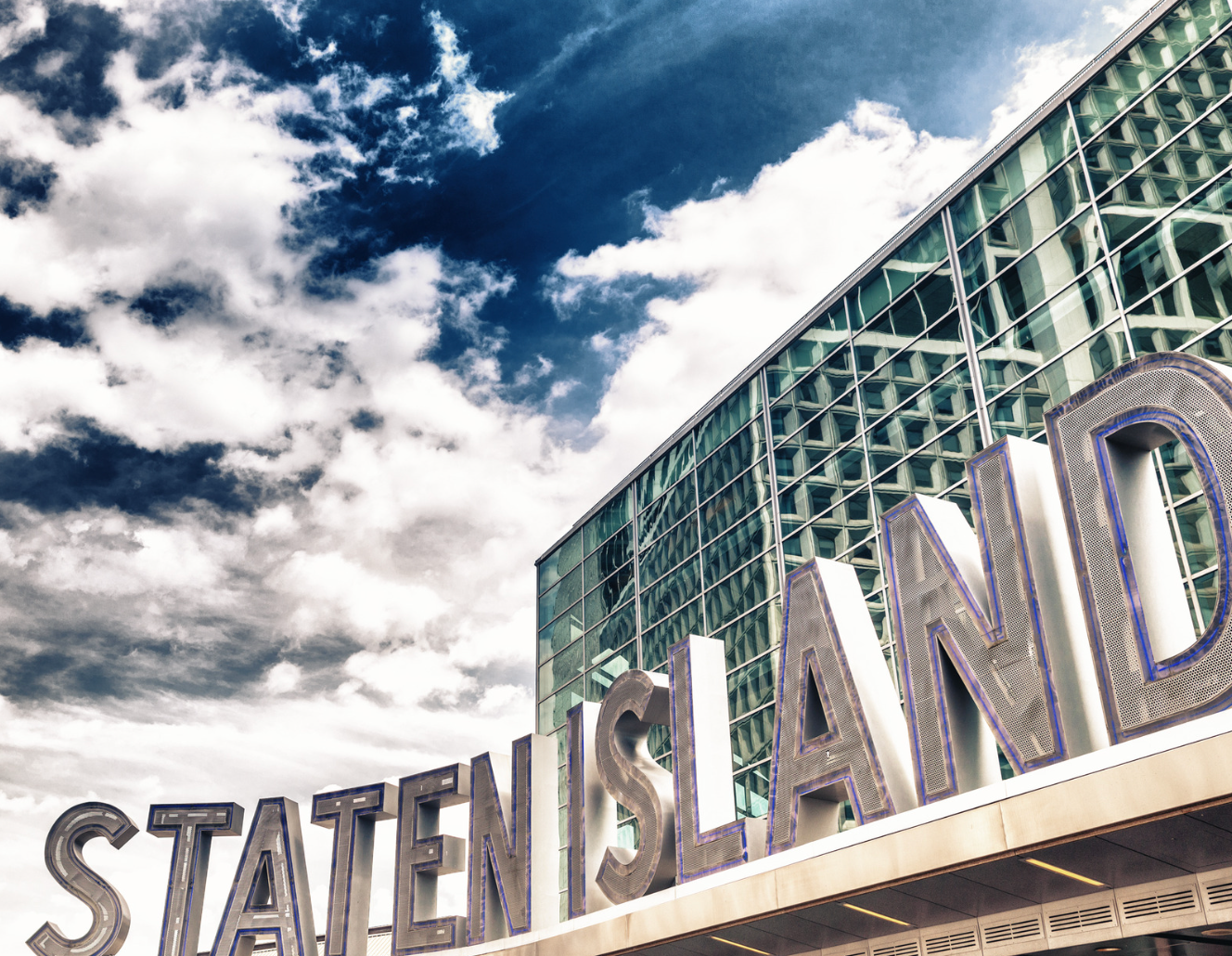A Brief History of Carroll Gardens
A BRIEF HISTORY OF CARROLL GARDENS
by Domenick Neglia, SRA, CSA-G
In the last century there were many neighborhoods in Brooklyn (do I have to add “New York” ?) with a strong Italian influence...Bensonhurst, Sheepshead Bay, Williamsburg, Dyker Heights, to name a few. One that still maintains a significant Italian flavor is Carroll Gardens, in what used to be called South Brooklyn, but is actually nearer to the mid-western section of the borough. It's in the same general area that Tuscany is in proportion to Italy, and like Tuscany, it has rich cultural roots. However, the heritage of most Italians in Carroll Gardens is not from the Tuscany region, but rather from Southern Italy, as a result of the great immigration of southern Italians through Ellis Island in the late 1800's and early 1900's.
The People
When these immigrants arrived over 100 years ago, Carroll Gardens/South Brooklyn encompassed a larger geographical area than it does today. There was no BQE separating the neighborhood, so the western section included the Brooklyn waterfront; it also extended further north, to the Atlantic Avenue border with Brooklyn Heights. Back then, the Brooklyn docks dominated the entire area, with longshoremen enjoying consistent employment, albeit doing physically hard, demanding work. Most men working the docks were Italian and lived within walking distance; thus Italians dominated the area. Local shops reflected this dominance, with dry goods stores, deli’s, some restaurants, fruit stands, and many street vendors, just as in Little Italy in Manhattan.
My maternal grandfather, Antonino Mirenda, was one of those immigrants, arriving in 1906 at the “advanced” age of 16. He too settled in South Brooklyn and worked as a longshoreman on the docks. When Nino first came to this country via Ellis Island, after being sponsored by his older brother Martino, he lived in a rooming house on State Street in Brooklyn Heights. Later, after marrying my grandmother, they lived in a “cold water flat” on Nelson Street, on a block subsequently razed during the construction of the BQE and Brooklyn Battery Tunnel.
The population of Carroll Gardens today is no longer predominantly Italian, but is more reflective of the youth movement and upper middle class professionals associated with the real estate boom in Brownstone Brooklyn over the last 25 years. But the century-old Italian influence in the neighborhood remains unmistakable, and is quite appreciated by the younger, multi-ethnic generation.
The Architecture
There are more than 150 buildings comprising the Carroll Gardens Historic District, which was designated by New York City in 1973. Most of these houses are on President and Carroll Streets, and were built between 1869 and 1884. However, the brownstones in the neighborhood actually extend beyond the Historic District boundaries, and most date back to the late 1800's.
To walk inside one of these brownstones is like taking a trip in the twilight zone back over 100 years ago: The architectural details that survive in these stately buildings include the original wide wood moldings, pocket doors that slide into the walls, mahogany or oak banisters and wainscot, high ceilings on the parlor floors, parquet floors, built-in pier mirrors, marble fireplace mantles, and decorative plaster ceiling medallions. Most of these components were originally hand made, and exude exquisite 19th century character. Today, these extensive original details contribute significant value to these houses.
The ceilings on the parlor floors are often ten feet or higher, and many houses still have the coffin’s corner: a cut-out in the stairway wall where the coffin could be turned and still maintain a horizontal position. After all, in those days, when someone died, the wake was in the house, and the coffin was in the parlor - but the stairs were so steep, the pallbearers would have had to turn the coffin vertical, which would certainly upset the occupant inside! The coffin’s corner would allow the coffin to be brought down the staircase horizontally, ensuring that the inhabitant remain in a comfortable, prone position.
Beginning in the late 19th century, Italian immigrants moved into the beautiful brownstones of Carroll Gardens, with ornamental building facades and long front yards. From the early 1900's through the 1950's, Italians displaced the original Irish population in most of the neighborhood. Many of the large front yards still have religious shrines and statues throughout the year. During the Christmas holidays, the entire neighborhood is decorated with lights and ornaments adorning front yards and houses.
Five churches built during the 19th century still exist in Carroll Gardens, and three are still functioning as houses of worship; the other two have been converted to condominiums, which has been the recent trend. The three remaining churches are all very distinctive: St. Agnes Roman Catholic, on the corner of Sackett and Hoyt Streets; Saint Mary’s Star of the Sea at 467 Court Street; and Old Saint Paul’s church, at the corner of Court and Congress Streets. St. Paul’s was built in 1836, in what used to be part of greater South Brooklyn, but is now known as Cobble Hill.
The Shops and Food
Court Street remains the main commercial thoroughfare, and is still populated with many Italian restaurants and pizzerias, as well as pastry shops, bakeries, and a few clothing stores. Among the perennial standouts are:
Marietta’s Ladies, Men’s & Children’s Wear – Recently closed due to the death of the owners, this small clothing store was at 392 Court Street. My grandfather had a friend, Dominic Chirico, who he knew from the same town in Calabria. Our family called his wife commare Marietta, and it was Marrietta who opened the store in 1940. It’s obvious that the store did not changed at all in the 71 plus years of its existence. The shelves and showcases were the same old wood and glass style as they were before WWII, still stocked with women’s house dresses, underwear, nightgowns and pajamas, but now they sell jeans too - what a wonder!
Who wouldn’t love the Italian bread at Caputo’s Bakery, at 329 Court Street? Their cakes are unsurpassed, and everything is made on the premises, under the watchful eye of John Caputo, the fourth generation owner. John’s son, James, is next in line, and works there too. According to John, the bakery was originally opened in 1904 on Hicks Street by his great grandfather, Vincenzo, and ownership has stayed in the family ever since. Specialties include rustic bread, olive bread, pepper and lard bread, and my personal favorite, the old fashioned round, sliced Italian bread (with a thick crust) - just great toasted with butter for breakfast! John tells me that this is one of the oldest continually family operated Italian bakeries in all of Brooklyn, and I surely believe him.
Speaking of bakeries, I can’t leave out Mazzola Bakery, at 192 Union Street - they still make the best Prosciutto bread, and now you can have an expresso and pastry on a table on the front sidewalk, just as you would in Tuscany. It seems like they bake all night, and the wonderful smell wafts over the neighborhood like a delicious cloud from bakery heaven.
Esposito’s Pork Store, at 357 Court St., was voted by Yelp.com as the best Italian deli in Brooklyn, and I can understand why, after having shopped there for the last 25 years. Owned by John and George Esposito, it too has been operated by the same family for almost 100 years. They make their own sausages, mozzeralla, and rice balls, and recently started offering fresh pasta too. The sharp provolone is aged a minimum of two years, and is the best you will taste anywhere. Just to walk inside and inhale the delicious smells makes anyone yearn to taste one of their homemade delicacies.
Ferdinando’s Foccaceria at 151 Union Street, is technically now in Carroll Gardens West if local real estate brokers are to be believed; this was part of the original Carroll Gardens waterfront section in the late 1800's and early 1900's. Separated in the 1950's from Carroll Gardens proper by the Brooklyn Queens Expressway, it nevertheless has lost none of its original charm and old world appeal. The current proprietor, Francesco, is the son-in-law of the original owner, Ferdinando, who first opened the restaurant in 1904, primarily as a fast food lunch stop for the longshoremen. Much of the interior remains unchanged from over 100 years ago, including the wood and glass food show cases in the front, and a myriad of old photographs of Sicily. Of course the kitchen is right up front, and the original old sign remains on the wall behind the stove announcing Ferdinando’s Foccaceria, Est. 1904". Among the Sicilian favorites offered on the menu are vastedda, arancina, trippa, pasta con sarde, polpo, and my personal favorite, the panelle special.
Conclusion:
The common thread among the Italian stores in Carroll Gardens is the same as it was 100 years ago: the owner is always there to watch the store ...giving the personalized care in production, the love of the product itself, the pride in creating the best possible product, and of course, a friendly, warm, homey atmosphere. And the beneficiaries don’t have to be Italian - they just have to know homemade quality when they taste it!




